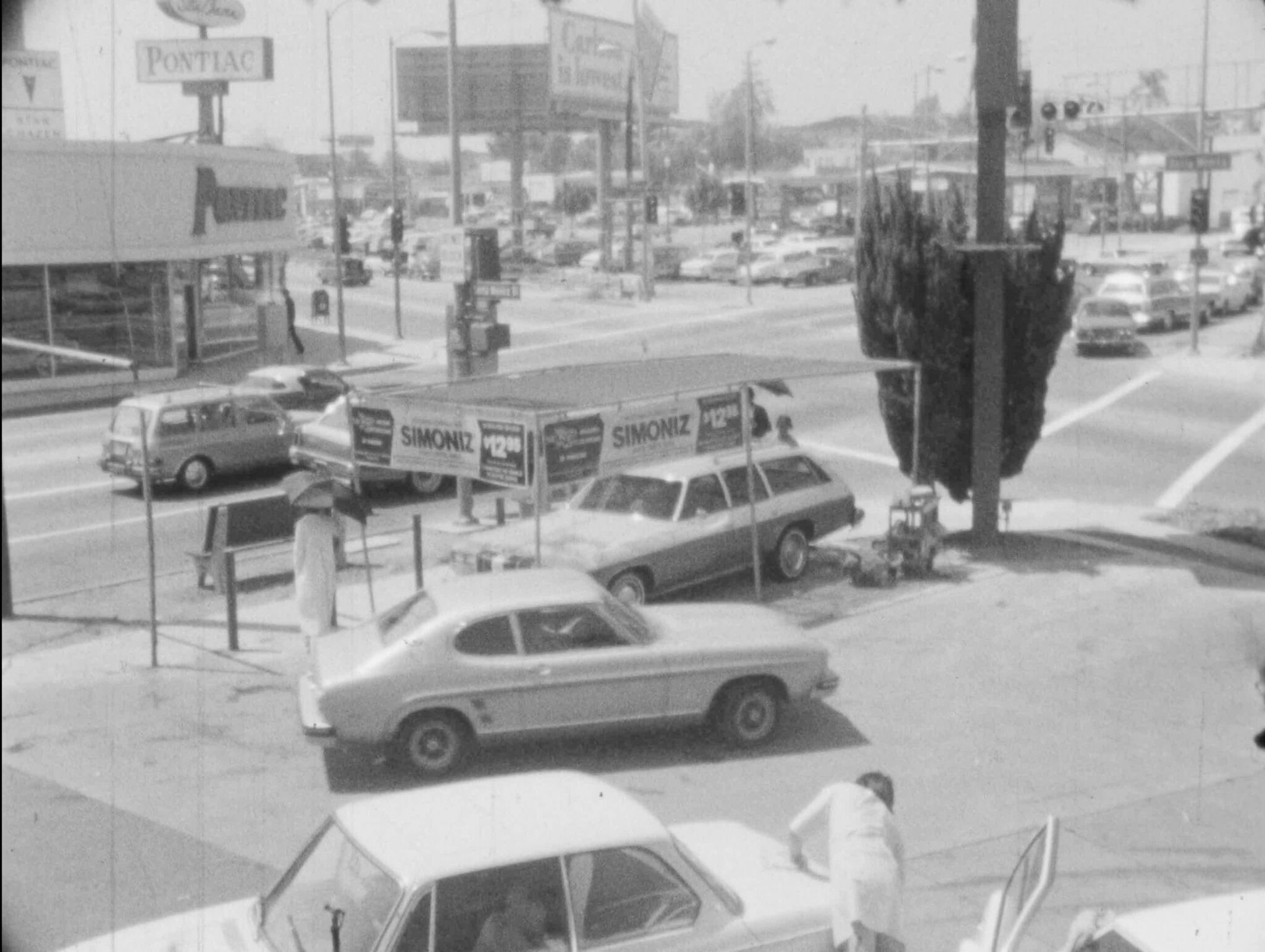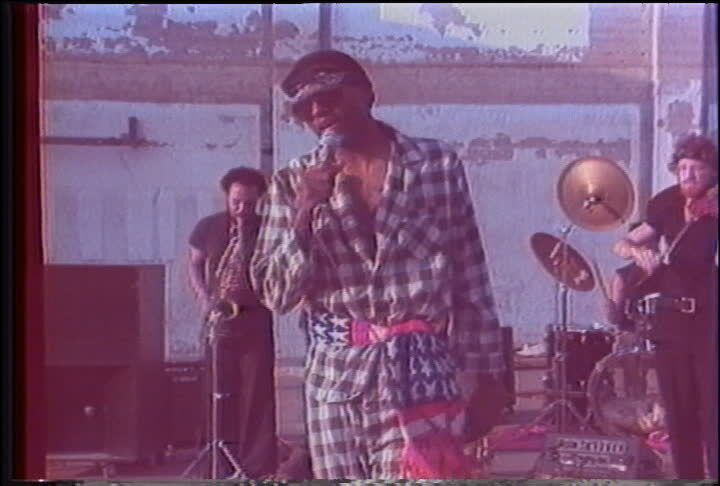Shifting Landscapes | Art & Artists
Los Angeles in Film and Video
6
Los Angeles has been a major center of the movie industry since the first decades of the twentieth century. Artists marginalized from mainstream cinema production or otherwise engaged in experimental practices have also found community and inspiration there. In the late 1960s, a critical gathering of African and African American students formed at the UCLA School of Theater, Film, and Television. Loosely grouped together under the moniker L.A. Rebellion, these filmmakers—including Melvonna Ballenger, whose 1978 narrative short Rain (Nyesha) is screening here—centered Black stories and experiences in their moving-image works. Made five years later, Ulysses Jenkins’s Without Your Interpretation (1983) documents a performance staged along the Los Angeles River that used movement to critique American obliviousness to global societal ills. In these works, Ballenger and Jenkins aim to depict complex representations of Black life in counterpoint to the film industry’s ongoing, detrimental stereotypes.
Artists
- Robert Adams
- Yuji Agematsu
- Laura Aguilar
- John Ahearn
- Felipe Baeza
- Firelei Báez
- Melvonna Ballenger
- Orian Barki
- Jean-Michel Basquiat
- Meriem Bennani
- María Berrío
- Diane Burns
- Jenny Calivas
- Carolina Caycedo
- Enrique Chagoya
- Tseng Kwong Chi
- Arch Connelly
- Agnes Denes
- Jane Dickson
- Chioma Ebinama
- rafa esparza
- Christina Fernandez
- Teresita Fernández
- Steven Fragale
- LaToya Ruby Frazier
- Dalton Gata
- Aaron Gilbert
- Martine Gutierrez
- Keith Haring
- Bessie Harvey
- Lonnie Holley
- Nancy Holt
- Pao Houa Her
- Donna Huanca
- Peter Hujar
- Suzanne Jackson
- Ulysses Jenkins
- Luis Jimenez
- Michael Joo
- Sonya Kelliher-Combs
- An-My Lê
- Maya Lin
- Miguel Luciano
- James Luna
- Guadalupe Maravilla
- Hiram Maristany
- Leslie Martinez
- Patrick Martinez
- Gordon Matta-Clark
- Keith Mayerson
- Park McArthur
- Ana Mendieta
- Amalia Mesa-Bains
- Mundo Meza
- Alan Michelson
- Troy Michie
- Joe Minter
- Kenji Nakahashi
- Martha Jane Pettway
- Piliāmo‘o
- Piliāmo'o
- Chuck Ramirez
- Sophie Rivera
- Alison Saar
- David Benjamin Sherry
- Trevor Shimizu
- Nicole Soto Rodríguez
- Anita Steckel
- Michelle Stuart
- Kunié Sugiura
- Tabboo!
- Salman Toor
- Rigoberto Torres
- Theo Triantafyllidis
- Artie Vierkant
- Carlos Villa
- Emmi Whitehorse
- Martin Wong
- Purvis Young


